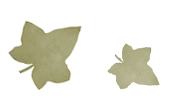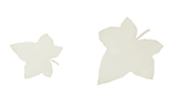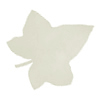


|
Step
0 . Do Nothing Step
1. Collect Information Step 2. Engage the Energy Homeopathic remedies for those with stress incontinence include Causticum, Pulsatilla, and Belladona. The last is specific for women whose incontinence occurs after childbirth or surgery. Step
3. Nourish and Tonify Step
4. Stimulate/Sedate Step 5b. Use Drugs Step
6. Break and Enter Collagen
injections, used to bulk up weakened bladder muscles,
have to be repeated every six months, can cause
allergic reactions, and generally provide only partial
relief. Trans-vaginal
radio frequencies, applied by means of a thin probe
inserted into the vagina during a minor surgical
procedure, heat up and break down pelvic floor muscles,
which heal tighter and more in control. Three-quarters
of a group of 109 women who had the procedure were
completely continent or had improved at the year
follow-up.5 A new surgical option is so simple, it may revolutionize the treatment of stress incontinence. Under local anesthesia, a muscle biopsy is cut from the biceps. The myoblasts (cells) thus obtained are grown for six weeks until there are 60 million of them. Injected into the muscle that controls the flow of urine, they proliferate and rebuild the sphincter, restoring full bladder control in 90% of the women within 24 hours.6,7 Ferdinand Frauscher, MD, of Innsbruck, co-developer of the technique says: “The whole procedure … takes just 10-15 minutes. It reverses the effects of aging …”8 Most women (80%) retained complete bladder control for a year afterward; long-term data not available. Weight loss, even as a result of bariatric surgery, reduces the severity of both urinary and fecal incontinence.9 Think having a C-section instead of a vaginal birth will protect you against later incontinence? It won’t.10,11 A hysterectomy may help - but only if you are already incontinent. In a study of 1200 women, 89% of those with severe, and 62% of those with moderate, incontinence experienced improvement after a hysterectomy. However, 17% of those with mild or no prior incontinence experienced leakage in the year after surgery.12 And a review of 30 years of journal articles found that, in general, middle-aged women with hysterectomies had a 60% higher risk of incontinence later in life.13 The two most common surgical corrections for weak pelvic muscles are the Burch and the Sling. In one head-to-head study, at the two-year follow-up, 49% of those who had the simpler Burch - which uses stitches to lift the pelvic floor, like a face lift - were dry, as compared to 66% of those who had the more invasive Sling - in which a small piece of abdominal tissue is looped under the urethra and sewn onto the abdominal wall.14 Everyone
who is incontinent has weak muscles. The difference
is that those with stress incontinence “deny
the problem, pay little attention to bladder signals,
and are surprised when a slight physical exertion
forces urine out of the bladder. The urge patient,
on the other hand, is preoccupied with bladder signals
… and rushes to the toilet at the first signals.
…the brain learns to stop inhibiting the reflexive
contractions of the bladder …” 1.
Meta-study led by Jeanette S Brown MD, reported
in Bottom Line Health, December 1, 2000. Legal Disclaimer: This content is not intended to replace conventional medical treatment. Any suggestions made and all herbs listed are not intended to diagnose, treat, cure or prevent any disease, condition or symptom. Personal directions and use should be provided by a clinical herbalist or other qualified healthcare practitioner with a specific formula for you. All material in this article is provided for general information purposes only and should not be considered medical advice or consultation. Contact a reputable healthcare practitioner if you are in need of medical care. Exercise self-empowerment by seeking a second opinion. Susun
Weed Susun
is one of America's best-known authorities on herbal
medicine and natural approaches to women's health.
Her four best-selling books are recommended by expert
herbalists and well-known physicians and are used
and cherished by millions of women around the world.
Learn more at www.susunweed.comSusun Weed’s
books include: Wise
Woman Herbal for the Childbearing Year
NEW
Menopausal Years the Wise Woman Way Breast
Cancer? Breast Health! This article is © copyright Susun S. Weed Republished here with kind permission. |
|

Gaia's Garden Library
Non Fiction Section : Gaia's Garden Herblore | Susun S. Weed Articles | Articles and Musings
Fiction Section : Short Stories & Prose| As Told
By Cat | Public Domain Texts| Poetry
Shop | Library | Gallery | Forum | Contact | Links








